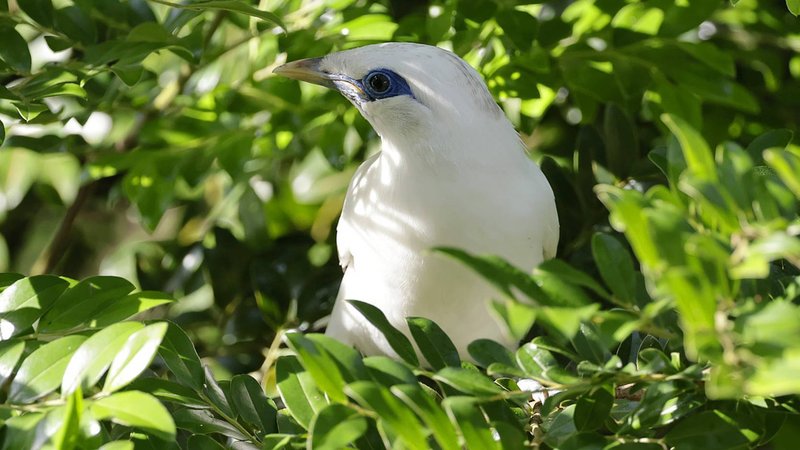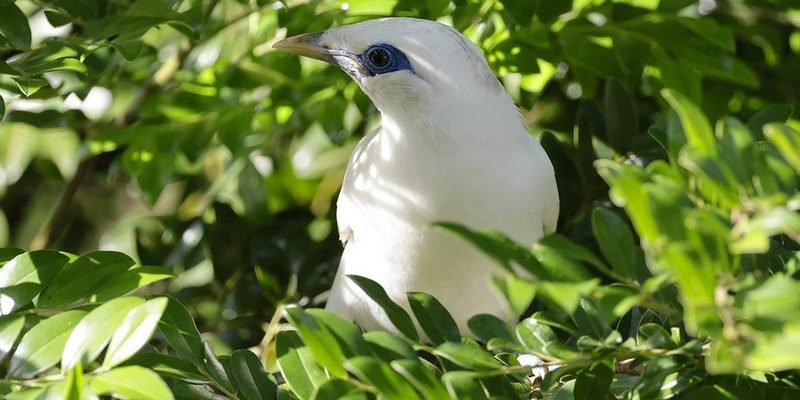
Have you ever heard the melodious chatter of a myna? These fascinating birds, often seen hopping around parks and gardens, are more than just pretty singers. Mynas are part of the starling family and are known for their striking appearance and remarkable intelligence. Imagine a bird that not only enjoys a good song but also has the ability to imitate human sounds and even learn a few words! That’s what makes mynas so captivating.
Originating from the warm climates of Asia, mynas have adapted well to urban environments, making them a common sight in cities across the world. Their curious nature and adaptability allow them to thrive in diverse habitats. As we delve into the world of mynas, you’ll discover their unique characteristics, behaviors, and why they have become such beloved birds among nature enthusiasts and casual observers alike.
What is a Myna?
The term myna generally refers to several species in the family Sturnidae, including the popular Indian myna, the hill myna, and the common myna. These birds are easily recognizable by their yellow eye patches, bright orange legs, and white wing feathers that are visible in flight. With a sturdy build and average lengths ranging from 9 to 12 inches, they are delightful to observe.
Mynas are highly social creatures, often found in pairs or small flocks. They are known for their distinct personalities, displaying behaviors that can be both playful and mischievous. Their vibrant calls and whistles can be heard throughout the day, making their presence known in any environment. Like many birds, they communicate through a variety of sounds—some of which might even remind you of your own voice!
Physical Characteristics
One of the first things you might notice about a myna is its appearance. With glossy brown feathers mixed with striking yellow accents, these birds are visually captivating. The yellow patches located around their eyes give them a unique look, reminiscent of a pair of expressive eyebrows. Their strong, curved beaks are perfectly designed for foraging and insect-catching, showcasing their adaptability in various habitats.
Their legs are short but sturdy, allowing them to hop around effectively. Mynas have a distinct flight pattern, characterized by strong flaps followed by gliding. This makes it easy to spot them in the air, particularly when they are transitioning between feeding spots. A good way to remember their size is to think of them as being roughly the same length as a small songbird but with a more robust body structure.
Habitat and Distribution
Mynas are primarily found in the tropical and subtropical regions of Asia. They thrive in a variety of habitats, ranging from urban landscapes to rural farmlands. You might find them in parks, gardens, and even near human settlements, where they often scavenge for food. Their adaptability is impressive; they can easily adjust to areas disturbed by human activity.
A notable feature of mynas is their migratory behavior, as some species move between breeding and wintering grounds depending on the season. This behavior allows them to take advantage of different food sources throughout the year. In regions where they are not native, such as parts of Africa and the Caribbean, mynas have been introduced and have successfully established populations, further demonstrating their resilience.
Diet and Feeding Habits
The diet of a myna is diverse and can change based on availability. In the wild, they predominantly feed on insects, fruits, and grains. This omnivorous diet allows them to thrive in various environments. For instance, during the breeding season, they may lean towards protein-rich insects to support their young chicks.
Mynas are known for their foraging behavior, often seen scratching the ground in search of seeds or insects. They are clever and can adapt their feeding strategies based on their surroundings. This adaptability not only showcases their intelligence but also their ability to survive in sometimes challenging conditions.
Behavior and Social Structure
One of the most fascinating aspects of mynas is their behavior. They are highly social birds, often spotted in pairs or small groups. Their lively and curious nature makes them entertaining to observe. You might see them engaging in playful activities or vocalizing with their companions, creating a vibrant atmosphere in their surroundings.
Mynas also have a unique ability to mimic sounds, including human voices. This skill can be startling if you’re not expecting it! It’s not uncommon for mynas to pick up sounds from their environment, using them as a part of their own vocal repertoire. This mimicry can create an interesting dynamic in places where they live close to humans—they often become quite the chatterboxes!
Reproduction and Nesting
When it comes to mating, mynas are typically monogamous, forming strong pair bonds. During the breeding season, males engage in elaborate courtship displays to attract females. These displays can include singing and performing aerial acrobatics. Once paired, they work together to build a nest in tree cavities, building structures made from grass, twigs, and other materials they can scavenge.
The female typically lays about 3 to 5 eggs, which are incubated for around 13 to 14 days. Both parents play a role in feeding and protecting the chicks after they hatch. The young mynas are fed insects and fruits, which help them grow quickly and prepare for independent life. Watching this nurturing process is a reminder of how dedicated these birds are to their offspring.
Conservation Status
While mynas are abundant in many areas and are considered adaptable, some species face threats from habitat loss and the increasing presence of invasive species. The introduction of the common myna to new regions, for example, has sometimes led to competition with local bird species for resources, impacting their numbers.
Conservation efforts are being made in certain areas to monitor populations and educate communities about the ecological roles that mynas play. This includes enhancing habitats and protecting natural environments that these birds depend upon. By ensuring their survival, we can continue to enjoy their presence and contributions to our ecosystems.
Interesting Facts About Mynas
| Scientific Name | Acridotheres tristis |
| Size | 9-12 inches |
| Weight | 150-200 grams |
| Lifespan | 4-15 years |
| Diet | Omnivorous (insects, fruits, seeds) |
| Nesting Habits | Tree cavities, buildings |
| Behavior | Social, intelligent, and vocal |
Mynas truly are remarkable birds, blending beauty with intelligence and charm. Their ability to adapt to a variety of environments, mimic sounds, and engage socially makes them a unique addition to the avian world. Whether you spot them in your garden or hear their calls echoing through the streets, these birds are sure to capture your attention. So next time you see a myna, take a moment to appreciate the vibrant personality and cleverness they bring to our lives.
FAQ
Are mynas good pets?
Raising a myna as a pet can be rewarding, but it comes with specific challenges. They require plenty of social interaction, mental stimulation, and a balanced diet to thrive. Keep in mind that mynas are known for their vocal mimicry, which can be fun but also potentially noisy. If you’re considering a myna as a pet, ensure you have the time and resources to meet their needs.
Can mynas be found outside of Asia?
Yes, while mynas are native to Asia, they have been introduced to other regions, including parts of Africa, the Caribbean, and even Hawaii. Their adaptability has allowed them to establish populations in these areas, often thriving in urban environments where human activity provides ample food sources.
What do mynas eat?
Mynas have a varied diet, which includes insects, fruits, seeds, and scraps of human food. They are omnivorous, allowing them to adjust their eating habits based on what’s available in their environment. In fact, mynas are known to be quite resourceful when foraging for food!
How long do mynas live?
The lifespan of a myna can vary greatly depending on its environment and threats it faces. In the wild, mynas typically live around 4 to 10 years, but under optimal captive conditions, they may live up to 15 years. Factors such as food availability and predation play a significant role in their longevity.
Do mynas migrate?
Some species of mynas do migrate, especially when it comes to finding suitable breeding and feeding areas. Their migratory behavior can change based on seasonal food availability. For example, if food becomes scarce in one area, mynas will move to locations that offer better resources, showcasing their adaptability.
What is the difference between the common myna and the hill myna?
The common myna (Acridotheres tristis) is more widely distributed and is frequently found in urban areas, while the hill myna (Gracula religiosa) prefers forested or hilly terrains. Additionally, hill mynas are known for their exceptional vocal abilities and are often kept as pets due to their ability to mimic human speech more clearly than their common counterparts.
Can mynas be trained to talk?
Yes, mynas are capable of learning to mimic human voices and various sounds, making them quite entertaining pets. With patience and consistent training, you can teach a myna to say simple phrases or mimic household sounds. However, not all mynas will be equally vocal, so it’s essential to engage them and provide ample opportunities for social interaction to encourage this behavior.
What kind of environmental threats do mynas face?
Mynas face various environmental threats, including habitat loss due to urbanization and deforestation. Additionally, competition from invasive species can impact their populations. Conservation efforts are essential to maintaining healthy myna populations and ensuring they can thrive in their natural habitats.
Are mynas social birds?
Absolutely! Mynas are highly social birds, often seen in pairs or small flocks. They enjoy interacting with each other and are known for their playful behavior. Their social nature is a key factor in their adaptability and survival, allowing them to thrive in various environments while engaging with their surroundings.

